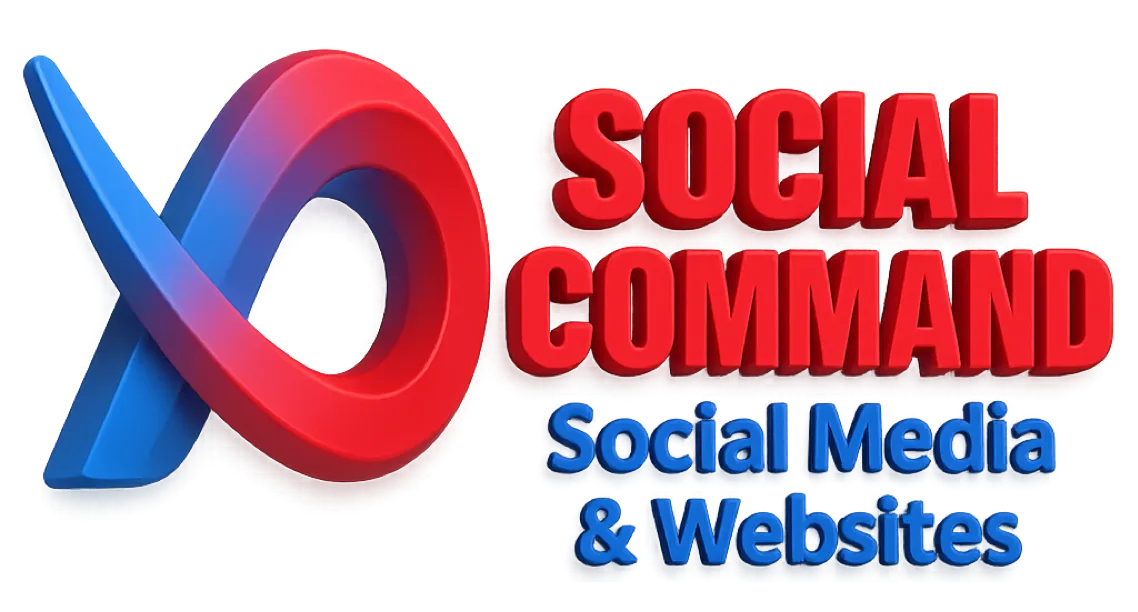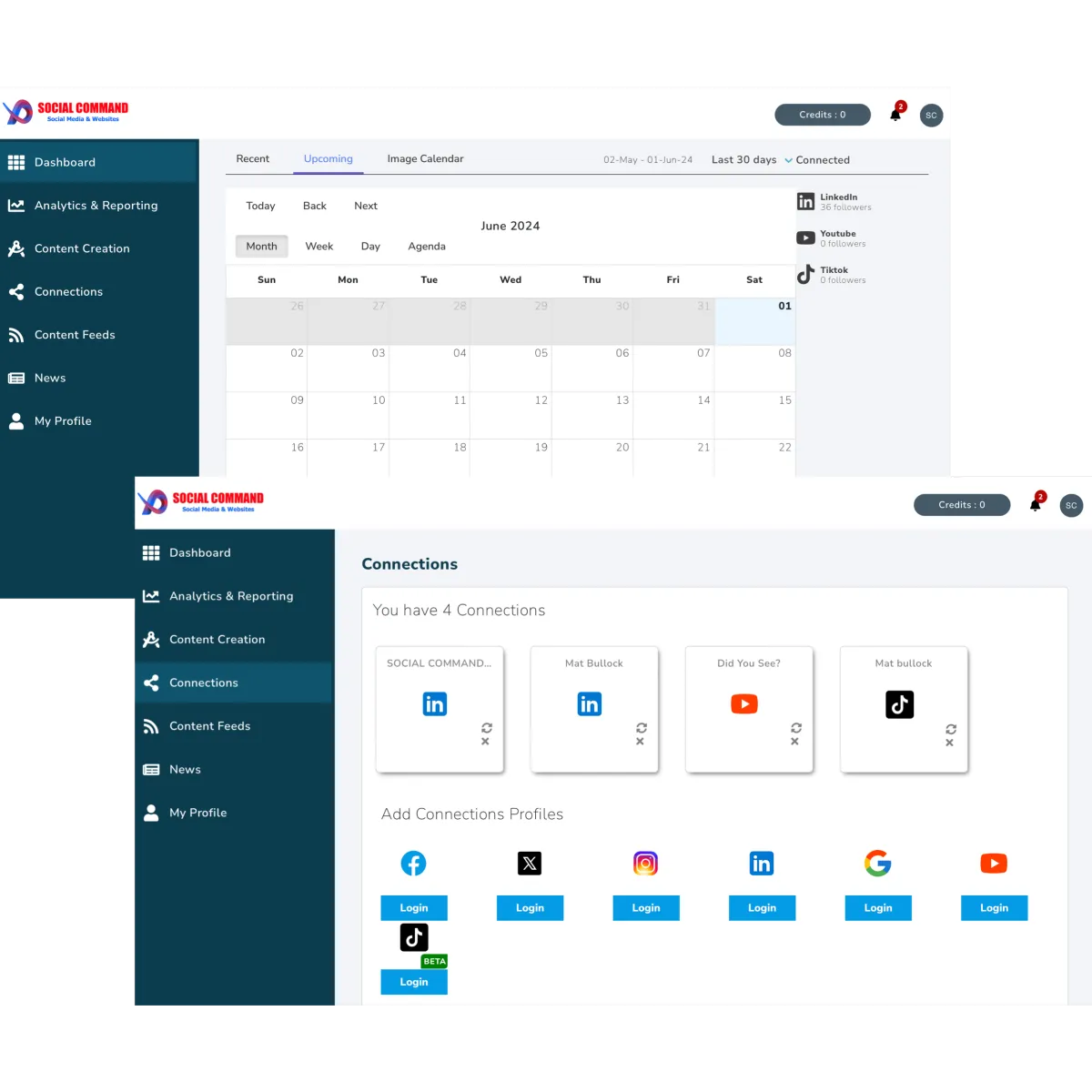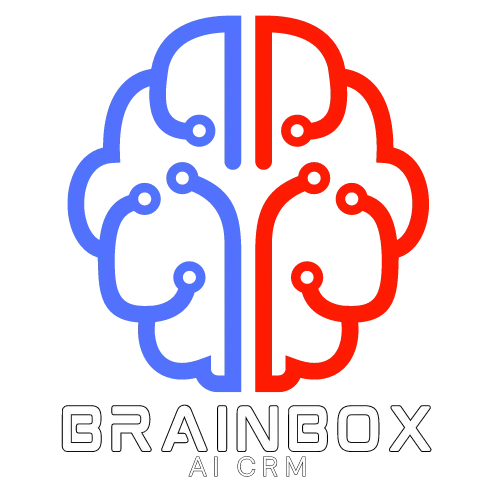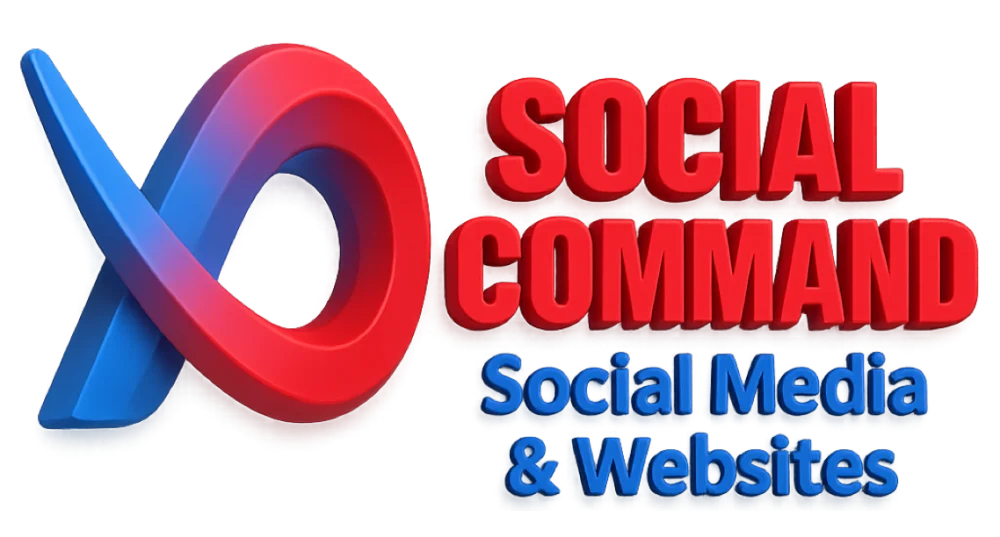
Powered By BRAINBOX
Revolutionise Your Social Media with AI-Driven Post Generation, Custom Ads, Seamless Integrations and Comprehensive Analytics! for just
£19.99 a month
Maximise your social media strategy with Brainbox AI from Social command. Easily generate and schedule posts, create stunning banner ads, and manage approvals with ease. Enjoy seamless integrations, customizable social deals, and detailed analytics—all in one platform.

Powered By BRAINBOX


Expect More From Your Social Media Tools
We have all the things you expect and more — on a budget

Brainbox AI
Quickly generate and schedule posts with artificial intelligence. And yes we also have RSS feeds!

Collaboration
Handle post approvals with our easy-to-use workflow.

Social Deals
Use our page builder to create beautiful social deals for your business or your clients.

Organic Banner Ads
Customisable banner ads to generate leads, download content, and more

Integrations
integrations—Canva, Unsplash, Zapier and more!

Social Analytics
Everything you need to understand social engagement plus custom reports

Unlocking Success With Turn-Key Solutions
In today’s fast-paced digital landscape, businesses require an efficient and comprehensive solution to navigate the complexities of online marketing. Enter the Social Command digital marketing and social media management platform, packed with versatile tools designed to streamline your marketing efforts and elevate your online presence. Let’s delve into the key features that make our social media and marketing software a game-changer for businesses like yours, looking to grow and gain new clients.

Our Social Media Solutions
Convenient AI:
Social command offers top of the line AI integration to help you streamline social media content creation by suggesting relevant topics and crafting engaging posts tailored for specific audiences, enhancing user engagement and expanding online reach.
Social Assessment:
Quickly perform assessments on the social media platforms used. Our innovative social media management platform includes analytics tools that provide valuable insights into metrics like engagement rates, follower growth, and post reach, letting you customise your marketing strategies.
Post Scheduling:
Schedule posts in advance, ensuring your content is consistently delivered to your audience at optimal times. This feature saves time, increases efficiency, and maximises your social media engagement,
Reputation Monitoring:
Social Command marketing tools can track mentions of any brand across the web. Instant alerts enable you to respond promptly to customer feedback and to maintain a positive brand image.
Review Alerts:
Our turn-key social media management platform provides review monitoring and alert systems that keep you informed of new reviews, both positive and negative. This allows your clients to engage with customers promptly and to take appropriate action.
Social Deals:
We make it easy to attract new customers and encourage repeat business for your clients with social deals and coupons. Create and share exclusive offers in order to expand their reach and drive conversions.
Analytics:
Your business will enjoy the robust analytics tools included with our social media software that track and visualise key performance metrics. These insights help you make informed decisions and optimise your marketing efforts.
Start A Free 7 Day Trial Today
Easy To Use Powerful Desktop & Mobile Control Centre




Social Command Has It All!
We are proud to offer the ultimate solution for businesses to thrive in the modern era. If you are looking to grow your firm, gain more clients, and deliver high-quality social media results, you’ve come to the right place. We know you’ll love the features of our social media management platform. Why wait? Get started growing your business today!

POWERED BY


7 DAY FREE TRIAL SOFTWARE
NO CREDIT CARD REQUIRED


